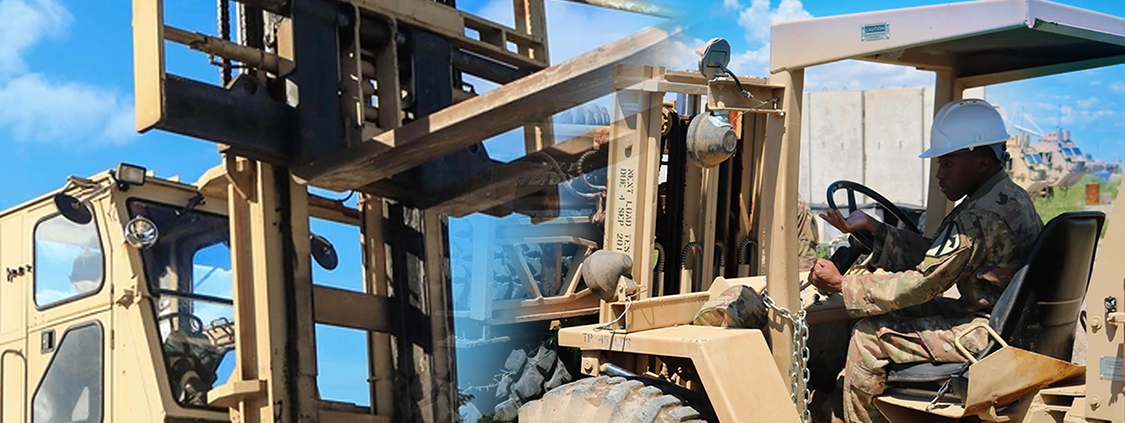Industrial Forklift Lithium-Ion Batteries: A Deep Dive into Integration, Efficiency, and Operational Readiness
Subtitle: What Fleet Operators and Warehouse Managers Must Know Before Upgrading from Lead-Acid
Introduction
Lithium-ion batteries have rapidly emerged as the power source of choice for modern forklift fleets. Their advantages—fast charging, zero maintenance, longer lifespan—are well known. But in industrial settings, these benefits only materialize when the entire battery system is fully integrated into the forklift’s electrical and operational architecture.
This article goes beyond a basic lithium-vs-lead comparison. We focus on what really matters to industrial users: compatibility with demanding work environments, communication with vehicle control systems, quick-charge infrastructure readiness, and operational return on investment.
- Built for the Warehouse: Matching Lithium Batteries to Harsh Industrial Realities
Upgrading to lithium isn’t just about swapping chemistry—it’s about engineering compatibility with your operational ecosystem.
🔧 Key industrial conditions that impact lithium battery performance:
- Cold storage logistics
→ Requires batteries with active heating BMS to maintain charge acceptance below 0°C. - Outdoor forklifts facing heat and humidity
→ Demands IP-rated enclosures and weather-sealed connectors to prevent corrosion. - High-shock environments (loading docks, ramps)
→ Calls for robust structural reinforcement inside the battery casing. - 3-shift nonstop operations
→ Needs temperature-managed packs that prevent overheating from continuous charging.
Not all lithium batteries are made for rugged duty. Choose solutions explicitly rated for industrial forklift use, not just general-purpose EV packs.
- Beyond TCO: Measuring True ROI in Lithium Forklift Deployment
While Total Cost of Ownership (TCO) is a popular comparison metric, it doesn’t capture operational-level impacts. Consider evaluating:
| Metric | Lead-Acid | Lithium-Ion |
| Charging time | 6–8 hours | 1–2 hours or less |
| Battery changes | Required per shift | None (opportunity charging supported) |
| Downtime per week | 4–6 hours | <1 hour |
| Floor space (charging room) | Required | Eliminated |
| Temperature sensitivity | High (risk of sulfation) | Lower with BMS-managed cells |
Also factor in:
- Labor hours saved on battery swaps
- Increased productivity with reduced downtime
- Lower HVAC costs by eliminating acid room ventilation
- Cleaner safety profile (no gassing, no spills)
In real-world applications, lithium pays off not only in maintenance but in process efficiency.
- Fast Charging Isn’t Just About Speed—It’s About Infrastructure
Many warehouses make the mistake of assuming fast charging just means “buy a bigger charger.” In reality, it’s a system design decision.
⚡ Strategic questions before deploying fast charging:
- Will each forklift have a dedicated charger, or will chargers be shared across shifts?
- Is your facility’s electrical supply capable of supporting multiple simultaneous high-rate chargers?
- Do you require opportunity charging stations at break areas or dock doors?
- Should you implement smart charge scheduling, integrating with WMS or EMS?
Fast charging adds significant value only when integrated into workflow design, especially for high-utilization fleets.
- BMS and Communication: Ensuring Seamless Forklift-Battery Integration
While most lithium batteries have a BMS, not all BMS systems speak the same language as your forklift’s control unit. That’s where real integration challenges begin.
Key integration requirements:
- CANopen or CAN J1939 protocol support
→ Enables real-time status sharing between battery and vehicle control unit (VCU). - Programmable voltage/current thresholds
→ Ensures compatibility with regenerative braking systems or dynamic loads. - Onboard diagnostic interface
→ Allows technicians to access BMS data without removing the battery. - SOC/SOH communication with forklift display
→ Critical for operators to monitor charge levels and fault codes.
Forklifts from OEMs like Toyota, Yale, Crown, or Hyster may require custom BMS mapping or firmware adjustment for full compatibility.
- Putting It Together: A Deployment Framework for Industrial Lithium Forklift Batteries
To ensure your lithium forklift battery project delivers on its promise, take a phased, systems-based approach:
| Step | Key Action |
| 1. Compatibility audit | Evaluate forklift models, duty cycles, ambient conditions |
| 2. Infrastructure assessment | Plan electrical upgrades, charging layout, ventilation needs |
| 3. Communication check | Match battery BMS protocols with forklift VCU compatibility |
| 4. Pilot deployment | Test integration in one or two units over multiple shifts |
| 5. Training & SOP updates | Educate operators and technicians on new systems and alerts |
Conclusion: Lithium Integration Is a Systems Upgrade, Not a Drop-In Replacement
Industrial forklift lithium-ion batteries offer transformative value—but only when approached with a systemic integration mindset. Instead of asking “Is lithium better than lead-acid?”, the right question is:
Can your fleet, facility, and processes support the full potential of lithium technology?
When properly selected, deployed, and supported, lithium batteries unlock productivity, safety, and efficiency gains that far exceed simple cost savings.
Recommended Reading
To deepen your understanding of forklift lithium battery care and upgrade best practices, explore these essential guides:
- ✅ Forklift Battery Maintenance: What Warehouse Managers and Operators Need to Know
A practical guide to maintaining your forklift batteries for optimal performance and longevity. - ✅ How to Replace a Lead Acid Forklift Battery with a Lithium One
Step-by-step insights on transitioning from lead-acid to lithium-ion batteries, addressing compatibility and operational considerations.


